- Home›
- Healthy Living›
- 39 Vitamin C Foods To Include In Your Diet
39 Vitamin C Foods To Include In Your Diet
By: Priyanka Maheshwari Sat, 09 Sept 2023 10:26:23
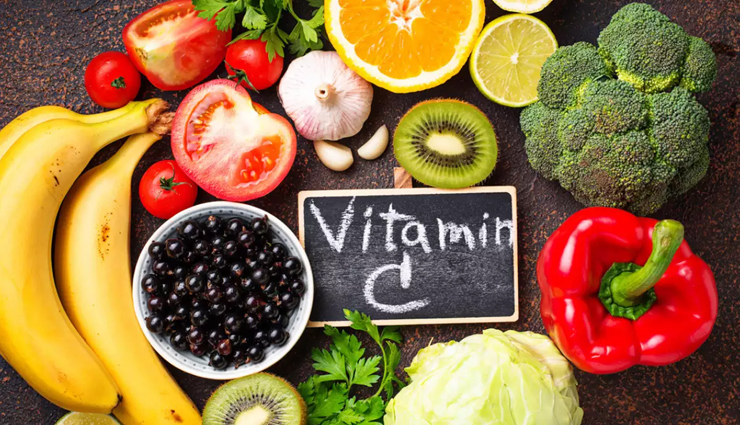
Vitamin C, also known as ascorbic acid, is a superstar nutrient that plays a pivotal role in maintaining overall health and well-being. It's renowned for its immune-boosting properties, antioxidant capabilities, and its role in collagen production, which is crucial for healthy skin, bones, and blood vessels.
But where can you find this essential vitamin? The answer lies in the colorful array of fruits and vegetables that nature provides. In this guide, we'll take you on a journey through 39 delectable foods that are rich in vitamin C, each offering its unique flavor, texture, and health benefits. Whether you're looking to strengthen your immune system, improve your skin's radiance, or simply add a burst of flavor to your meals, these vitamin C-rich foods are the perfect addition to your diet.
From the zesty citrus fruits like oranges and grapefruits to the crunchy bell peppers and sweet strawberries, you'll discover a diverse range of options to suit your taste buds and dietary preferences. We'll explore not only the vitamin C content of these foods but also their unique health benefits and creative ways to incorporate them into your daily meals and snacks.
So, prepare to embark on a vitamin C-rich culinary adventure that will leave you feeling more vibrant, energized, and ready to embrace a healthier lifestyle. Whether you're a fruit enthusiast, a veggie lover, or simply someone curious about the incredible world of nutrition, these 39 foods will show you that maintaining good health can be as delicious as it is nourishing. Let's dive in and discover the wonders of vitamin C together.
What is Vitamin C?
Vitamin C is a water-soluble vitamin that plays a crucial role in maintaining good health. It is an essential nutrient, meaning that the body cannot produce it on its own, so it must be obtained through the diet. Here are some key functions and benefits of vitamin C:
Antioxidant Properties: Vitamin C is a powerful antioxidant that helps protect cells from damage caused by free radicals, which are unstable molecules that can lead to oxidative stress and various chronic diseases.
Immune System Support: Vitamin C is known for its role in supporting the immune system. It helps stimulate the production of white blood cells, which are essential for fighting off infections and illnesses.
Collagen Production: Vitamin C is necessary for the synthesis of collagen, a structural protein that plays a vital role in skin, bones, tendons, and blood vessels. It promotes wound healing and maintains healthy skin.
Iron Absorption: Vitamin C enhances the absorption of non-heme iron (the type of iron found in plant-based foods) from the diet. This can be particularly important for individuals who follow vegetarian or vegan diets.
Antihistamine Properties: Some studies suggest that vitamin C may have mild antihistamine effects, which can help reduce allergy symptoms.
Cardiovascular Health: Adequate vitamin C intake may help reduce the risk of heart disease by improving blood vessel function and lowering blood pressure.
Eye Health: Vitamin C is associated with a reduced risk of cataracts and age-related macular degeneration, two common eye conditions.
Skin Health: Vitamin C is used in various skincare products due to its ability to brighten skin, reduce the appearance of fine lines and wrinkles, and protect against UV damage.
Cognitive Function: Some research suggests that vitamin C may play a role in maintaining cognitive function and reducing the risk of cognitive decline.
39 High Vitamin C Foods List
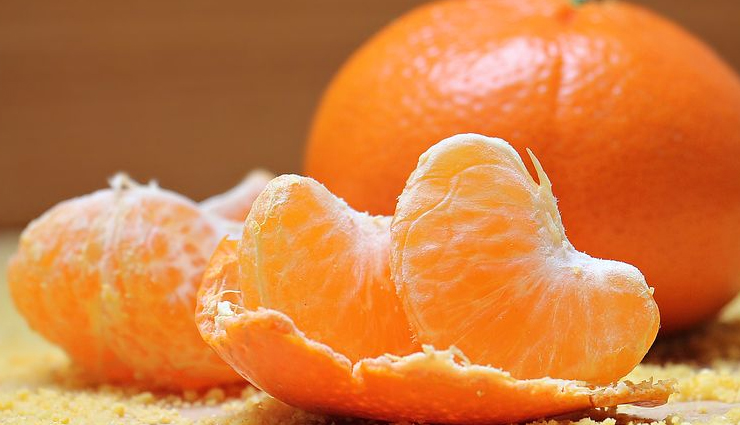
# Oranges
Oranges are prized for their impressive vitamin C content. A medium-sized orange typically provides around 70 milligrams (mg) of vitamin C, which is more than the recommended daily intake for most adults. Vitamin C is a powerful antioxidant that helps protect your cells from damage caused by free radicals, supports the immune system, aids in the absorption of iron from plant-based foods, and promotes healthy skin and connective tissues.
How to Incorporate Oranges into Your Diet:
Fresh Orange Slices: Simply peel and slice an orange for a refreshing and nutritious snack.
Orange Juice: Freshly squeezed orange juice is a classic way to enjoy the vitamin C benefits of oranges. Be sure to choose 100% pure orange juice without added sugars.
Fruit Salad: Add orange segments to your favorite fruit salad for a burst of citrus flavor and extra nutrition.
Smoothies: Blend oranges with other fruits and yogurt to create a tasty and vitamin C-rich smoothie.
Salads: Oranges can add a sweet and tangy flavor to both green and fruit salads. Combine them with leafy greens, nuts, and a light vinaigrette dressing for a delightful salad.
Desserts: Incorporate oranges into desserts like sorbets, tarts, or cakes for a sweet and zesty twist.
Orange Zest: Grate the zest (outer peel) of an orange and use it as a flavorful garnish for dishes or baked goods.
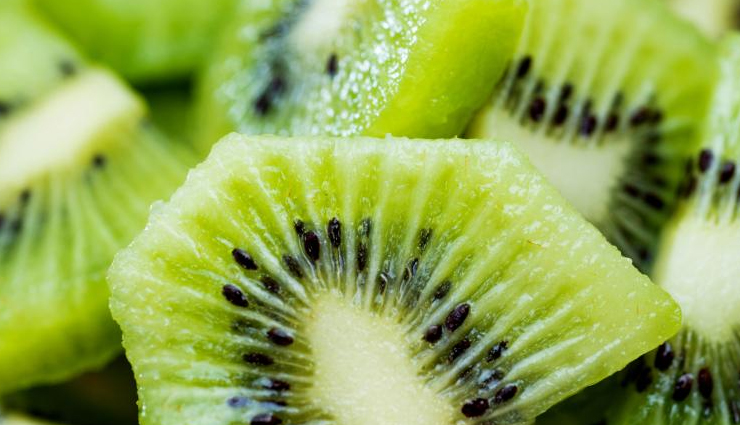
# Kiwi
Kiwi is renowned for its remarkably high vitamin C content. A single medium-sized kiwi typically provides around 71-93 milligrams (mg) of vitamin C, which is more than the recommended daily intake for most adults. This impressive vitamin C content makes kiwi a fantastic choice for meeting your daily nutritional needs.
How to Incorporate Kiwi into Your Diet:
Fresh Kiwi: The most straightforward way to enjoy kiwi is by cutting it in half and scooping out the flesh with a spoon. You can also peel the skin and slice or dice the fruit for a refreshing snack.
Kiwi Smoothies: Kiwi adds a delightful tangy flavor to smoothies. Blend it with other fruits, yogurt, and a bit of honey for a nutritious and tasty drink.
Fruit Salads: Kiwi pairs well with various fruits in salads. Combine it with strawberries, blueberries, or citrus segments for a colorful and flavorful fruit salad.
Kiwi Salsa: Dice kiwi and mix it with red onion, cilantro, lime juice, and a touch of jalapeño for a zesty salsa that complements grilled chicken or fish.
Desserts: Kiwi can be used as a garnish for desserts, including ice cream, yogurt, or custard. It adds a visually appealing and tangy twist to your sweet treats.
Kiwi Sorbet: Make a refreshing sorbet by pureeing kiwi with a bit of sugar and freezing the mixture.
Kiwi Jam: You can prepare homemade kiwi jam to spread on toast, pancakes, or waffles.
Kiwi Marinade: Kiwi can be used in meat marinades as an ingredient in dishes like kiwi-marinated chicken or pork.
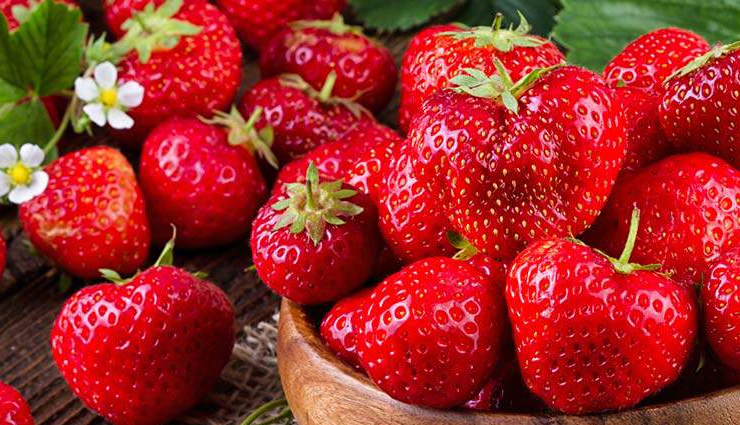
# Strawberries
Strawberries are known for their impressive vitamin C content. A one-cup serving (about 144 grams) of fresh strawberries provides approximately 89 milligrams (mg) of vitamin C. This is more than enough to meet your daily vitamin C needs, as the recommended daily intake for most adults is around 65-90 mg.
How to Incorporate Strawberries into Your Diet:
Fresh Strawberries: The simplest way to enjoy strawberries is to wash and eat them fresh. Remove the green hull (the stem and leaves) and savor the sweet and juicy fruit.
Strawberry Smoothies: Blend strawberries with yogurt, milk, or a dairy-free alternative for a delicious and nutritious smoothie. Add a touch of honey or maple syrup for sweetness if desired.
Strawberry Salad: Toss sliced strawberries into your green salads for a burst of flavor and color. They pair well with greens, nuts, and vinaigrette dressings.
Strawberry Parfait: Layer fresh strawberries with yogurt and granola for a delightful and healthy parfait.
Strawberry Salsa: Dice strawberries and combine them with red onion, cilantro, lime juice, and a bit of jalapeño for a refreshing salsa. This goes well with grilled chicken or fish.
Strawberry Desserts: Use strawberries to make desserts like strawberry shortcake, strawberry pie, or strawberry ice cream.
Preserves and Jams: Make homemade strawberry preserves or jams to spread on toast, biscuits, or pastries.
Strawberry Infused Water: Add sliced strawberries to a pitcher of water for a refreshing and lightly flavored drink.
Frozen Strawberries: Freeze strawberries to use in smoothies, as a topping for yogurt, or as a refreshing snack during hot weather.
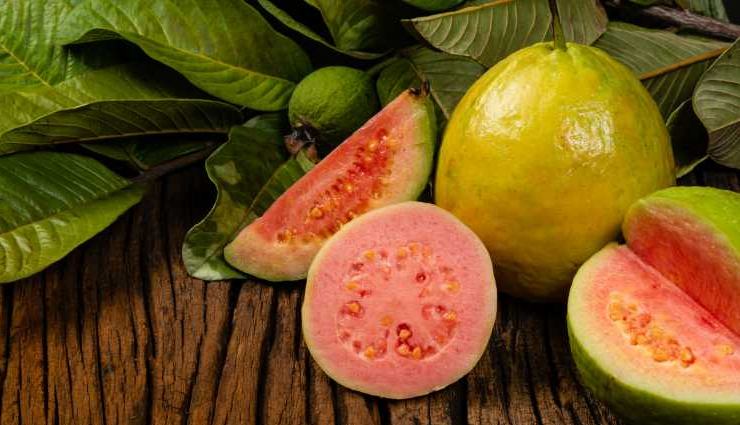
# Guava
Guava is one of the richest sources of vitamin C among all fruits. A single medium-sized guava (about 100 grams) can contain approximately 228 milligrams (mg) of vitamin C, which is more than double the recommended daily intake for most adults. This makes guava a powerhouse of this essential nutrient.
How to Incorporate Guava into Your Diet:
Fresh Guava: Simply wash and eat guava fresh. You can enjoy it by slicing or scooping out the flesh with a spoon. Guava skin is edible but may be a bit tough, so you can choose to eat it or peel it.
Guava Smoothies: Blend guava with other fruits, yogurt, and a bit of honey or sugar to create a delicious and vitamin C-rich smoothie.
Fruit Salad: Include guava in fruit salads for a unique and tropical flavor. It pairs well with other fruits like pineapple, mango, and papaya.
Guava Juice: You can make fresh guava juice by blending guava with water and straining the mixture to remove seeds. Avoid adding sugar for a healthier option.
Guava Salsa: Dice guava and combine it with red onion, cilantro, lime juice, and a bit of jalapeño to create a sweet and spicy salsa. This pairs wonderfully with grilled chicken or fish.
Guava Jam or Preserves: Make homemade guava jam or preserves to enjoy as a spread on toast, pancakes, or as a filling for pastries.
Guava Sorbet: Blend guava with a bit of sugar and freeze the mixture to make a refreshing and guilt-free sorbet.
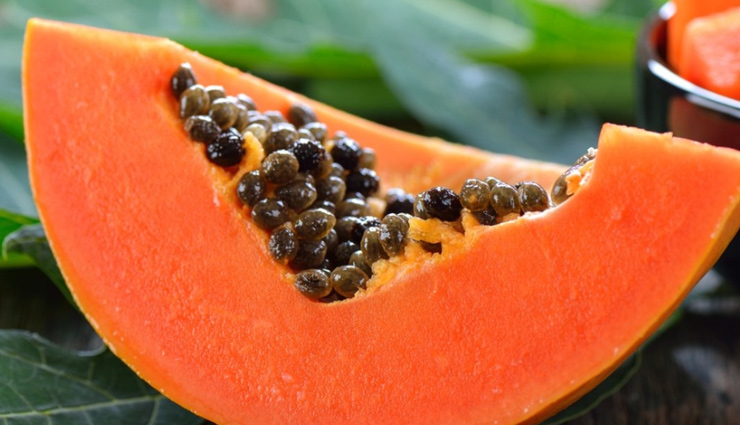
# Papaya
Papaya is known for its notable vitamin C content. A one-cup serving of fresh papaya (about 140 grams) can provide approximately 88 milligrams (mg) of vitamin C, which is more than the recommended daily intake for most adults. This makes papaya a valuable source of this essential nutrient.
How to Incorporate Papaya into Your Diet:
Fresh Papaya: To enjoy papaya, simply peel, remove the seeds, and slice or cube the flesh. You can eat it as a fresh and juicy snack or incorporate it into various dishes.
Papaya Smoothies: Blend papaya with other fruits, yogurt, and a bit of honey or coconut milk to create a delicious and nutritious smoothie.
Fruit Salad: Include papaya in fruit salads to add a tropical and sweet flavor. It pairs well with fruits like pineapple, mango, and kiwi.
Papaya Salsa: Dice papaya and combine it with red onion, cilantro, lime juice, and a touch of jalapeño for a refreshing salsa. This complements grilled chicken or fish.
Papaya Salad: Create a papaya salad by combining shredded papaya with herbs, lime juice, and a dash of chili powder. This is a popular dish in many Southeast Asian cuisines.
Papaya Juice: Blend papaya with water and a bit of sugar to make fresh papaya juice. Avoid adding excessive sugar for a healthier option.
Papaya Desserts: Use papaya to make desserts like papaya ice cream, papaya smoothie bowls, or papaya sorbet.
Papaya Seeds: Some people consume papaya seeds, which have a peppery flavor, for their potential digestive benefits. However, they should be used in moderation.
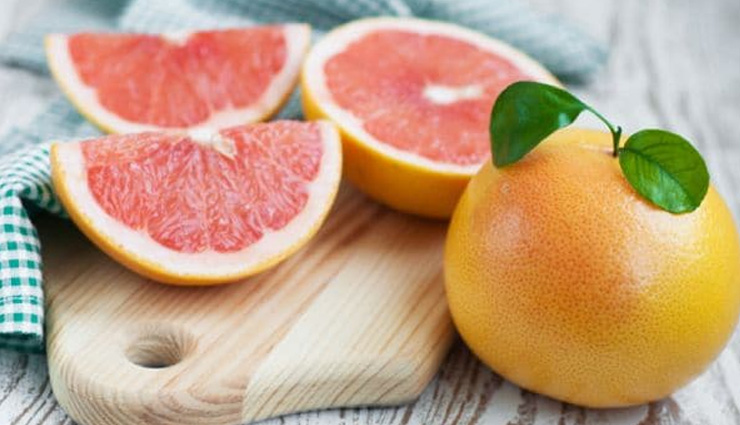
# Grapefruit
A half of a medium-sized grapefruit (about 123 grams) can contain approximately 38 milligrams (mg) of vitamin C. While this is not as high as some other fruits like oranges or kiwi, it still contributes to your daily vitamin C intake.
How to Incorporate Grapefruit into Your Diet:
Fresh Grapefruit: To enjoy grapefruit, cut it in half and use a grapefruit spoon or knife to scoop out the flesh. You can sprinkle a bit of sugar or honey on top for added sweetness if desired.
Grapefruit Wedges: Cut grapefruit into wedges and serve them as a refreshing and tangy snack.
Grapefruit Juice: Freshly squeezed grapefruit juice is a classic way to enjoy the fruit. Avoid adding sugar for a healthier option.
Grapefruit Segments: Segment grapefruit and add the juicy pieces to salads for a burst of citrus flavor.
Grapefruit Smoothies: Blend grapefruit with other fruits like banana, berries, and yogurt to create a zesty and vitamin C-rich smoothie.
Grapefruit Salad: Combine grapefruit segments with avocado, red onion, and greens to make a unique and flavorful salad.
Broiled Grapefruit: Sprinkle grapefruit halves with a touch of sugar or honey and broil them for a caramelized and warm treat.
Grapefruit Desserts: Use grapefruit to make desserts like grapefruit sorbet, grapefruit custard, or grapefruit curd.
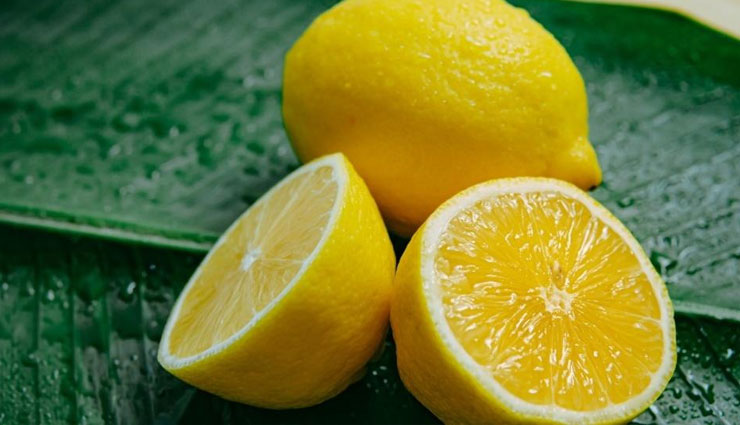
# Lemons
Lemons are a rich source of vitamin C. A medium-sized lemon (about 58 grams) typically provides around 30-40 milligrams (mg) of vitamin C. While this may not be as high as some other fruits, lemons are still a valuable dietary source of this essential nutrient.
How to Incorporate Lemons into Your Diet:
Lemon Juice: Squeeze fresh lemon juice and use it as a natural flavor enhancer for water, tea, or recipes.
Lemon Zest: Grate the zest (outer peel) of a lemon to add a burst of citrus flavor to dishes, desserts, and baked goods.
Lemon Slices: Add lemon slices to water, iced tea, or cocktails for a refreshing twist.
Lemon Wedges: Serve lemon wedges alongside seafood, grilled chicken, or salads to add acidity and flavor.
Lemon Salad Dressing: Combine lemon juice, olive oil, garlic, and herbs to create a tangy salad dressing.
Lemon Marinades: Use lemon juice in marinades for meat, poultry, or fish to tenderize and flavor the food.
Lemon Desserts: Lemons are commonly used in desserts like lemon bars, lemon meringue pie, or lemon sorbet.
Lemon Infused Water: Add lemon slices to a pitcher of water for a refreshing and lightly flavored beverage.
Lemon Curd: Make homemade lemon curd to use as a spread for toast or as a filling for pastries.
Lemon Tea: Brew a cup of hot water with lemon juice and honey for a soothing and vitamin C-rich tea.
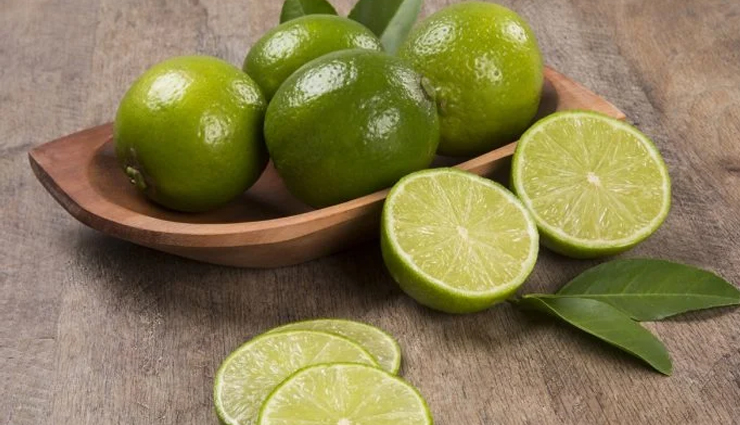
# Limes
Limes contain a notable amount of vitamin C. A medium-sized lime (about 44 grams) typically provides around 20-30 milligrams (mg) of vitamin C. While this vitamin C content is slightly lower than that of lemons or oranges, limes are still a valuable source of this essential nutrient.
How to Incorporate Limes into Your Diet:
Lime Juice: Squeeze fresh lime juice and use it as a natural flavor enhancer for water, tea, cocktails, or recipes.
Lime Zest: Grate the zest (outer peel) of a lime to add a burst of citrus flavor to dishes, desserts, and baked goods.
Lime Slices: Add lime slices to water, iced tea, or beverages for a refreshing twist.
Lime Wedges: Serve lime wedges alongside dishes like tacos, seafood, or salads to add acidity and flavor.
Lime Salad Dressing: Create a zesty salad dressing by combining lime juice with olive oil, garlic, and herbs.
Lime Marinades: Use lime juice in marinades for meats, poultry, or fish to infuse them with tangy flavor.
Lime Desserts: Limes are often used in desserts like key lime pie, lime sorbet, or lime bars.
Lime Infused Water: Add lime slices to a pitcher of water for a refreshing and lightly flavored beverage.
Lime Guacamole: Lime juice enhances the flavor of guacamole and other dips.
Lime Ceviche: Lime juice is a key ingredient in ceviche, a dish in which raw seafood is "cooked" by marinating it in lime juice.

# Acerola Cherries
Acerola cherries are considered one of the richest natural sources of vitamin C. The vitamin C content in acerola cherries can vary, but they typically contain around 1,500 to 4,000 milligrams (mg) of vitamin C per 100 grams, which is significantly higher than most other fruits. This makes acerola cherries a true vitamin C powerhouse.
How to Incorporate Acerola Cherries into Your Diet:
Fresh Acerola Cherries: If you have access to fresh acerola cherries, you can simply wash and eat them as a nutritious and tangy snack. They can also be added to fruit salads.
Acerola Cherry Juice: Many people consume acerola cherry juice, which is available as a supplement or a natural juice. Be sure to check the label for added sugars or preservatives, and opt for 100% pure acerola cherry juice.
Acerola Cherry Powder: Acerola cherry powder is a convenient way to add a vitamin C boost to smoothies, yogurt, or other recipes. It can also be used as a supplement.
Acerola Cherry Supplements: Acerola cherry supplements, available in various forms like capsules or tablets, provide a concentrated source of vitamin C.
Acerola Cherry Jam: You can make homemade acerola cherry jam or preserves to spread on toast or pastries.
Acerola Cherry Sorbet: Blend acerola cherries with a bit of sugar and freeze the mixture to make a refreshing and vitamin C-rich sorbet.
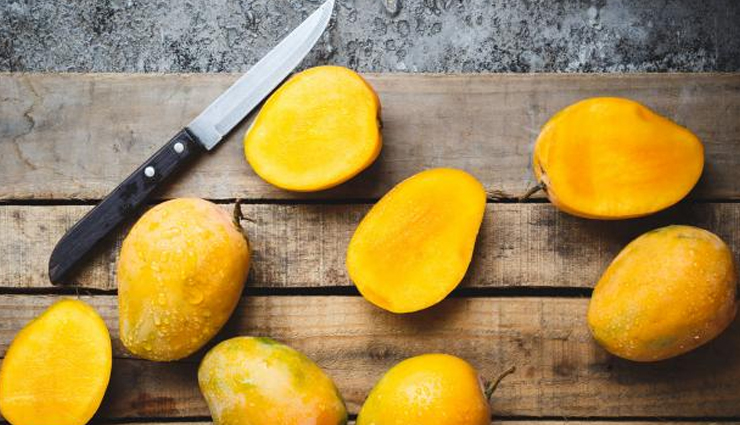
# Mango
Mangoes are known for their vitamin C content. A one-cup (about 225 grams) serving of sliced, fresh mango typically provides approximately 60 milligrams (mg) of vitamin C, which is around 67% of the recommended daily intake for most adults.
How to Incorporate Mangoes into Your Diet:
Fresh Mango: To enjoy mangoes, peel the skin and cut the flesh away from the large pit. You can then slice, dice, or simply enjoy the juicy fruit on its own.
Mango Smoothies: Blend fresh mango with yogurt, milk, or a dairy-free alternative for a creamy and vitamin C-rich smoothie.
Mango Salsa: Dice mango and combine it with red onion, cilantro, lime juice, and a bit of jalapeño to create a refreshing salsa. This pairs well with grilled chicken, fish, or tortilla chips.
Mango Salads: Add mango slices to green salads for a sweet and tropical twist. Mango goes particularly well with salads that include avocados, nuts, and vinaigrette dressing.
Mango Lassi: Make a traditional Indian mango lassi by blending mango with yogurt, sugar, and a pinch of cardamom for a refreshing and exotic drink.
Mango Chutney: Prepare homemade mango chutney to serve as a condiment with grilled meats or as a flavorful accompaniment to rice dishes.
Desserts: Mangoes are commonly used in desserts like mango sorbet, mango ice cream, or mango cheesecake.
Mango Slices: Enjoy mango slices as a healthy and sweet snack.
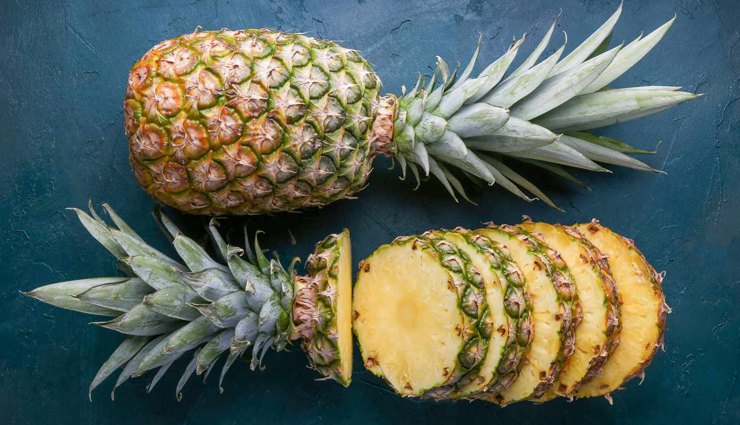
# Pineapple
Pineapples are known for their vitamin C content. A one-cup (about 165 grams) serving of fresh pineapple chunks typically provides approximately 79 milligrams (mg) of vitamin C, which is around 88% of the recommended daily intake for most adults.
How to Incorporate Pineapples into Your Diet:
Fresh Pineapple: To enjoy pineapple, peel the skin and cut the flesh away from the core. You can then slice or dice the juicy fruit for a refreshing snack or ingredient in dishes.
Pineapple Chunks: Pineapple chunks make a sweet and healthy addition to fruit salads or yogurt parfaits.
Pineapple Smoothies: Blend fresh or frozen pineapple chunks with other fruits, yogurt, and a bit of honey or coconut milk to create a tropical and vitamin C-rich smoothie.
Pineapple Salsa: Dice pineapple and combine it with red onion, cilantro, lime juice, and a bit of jalapeño to create a zesty salsa. This pairs well with grilled chicken, fish, or tacos.
Pineapple Juice: Freshly squeezed pineapple juice is a delightful and refreshing beverage. Avoid adding sugar for a healthier option.
Pineapple Desserts: Pineapples are often used in desserts like pineapple upside-down cake, pineapple tarts, or pineapple sorbet.
Grilled Pineapple: Grill pineapple slices for a caramelized and smoky flavor. It's a great side dish for barbecues.
Pineapple Marinades: Use pineapple juice or puree in marinades for meats, poultry, or fish to infuse them with tropical flavor.
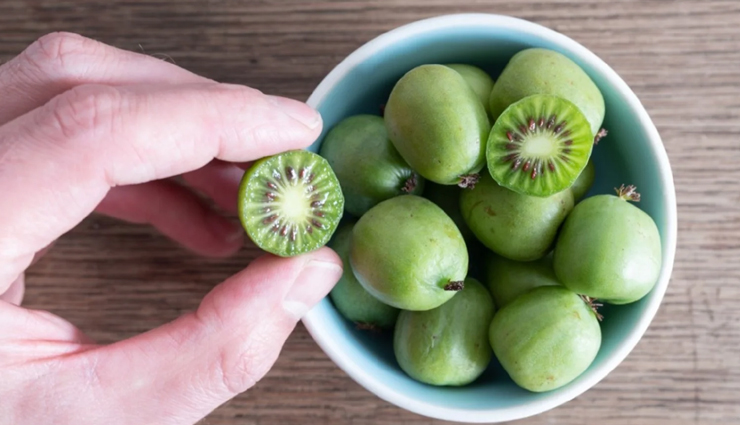
# Kiwi Berries
Kiwi berries are a notable source of vitamin C. A one-cup (about 166 grams) serving of fresh kiwi berries typically provides approximately 80 milligrams (mg) of vitamin C, which is roughly equivalent to the amount found in a medium-sized kiwifruit. This represents a significant portion of the recommended daily intake for most adults.
How to Incorporate Kiwi Berries into Your Diet:
Fresh Kiwi Berries: Kiwi berries are typically enjoyed fresh. Simply rinse them and eat them whole, including the skin, which is edible and contributes to their unique tartness.
Kiwi Berry Smoothies: Blend kiwi berries with other fruits, yogurt, and a bit of honey or juice to create a vitamin C-rich smoothie.
Kiwi Berry Salad: Add kiwi berries to fruit salads for a pop of color and flavor. They pair well with other fruits like strawberries, grapes, and blueberries.
Kiwi Berry Toppings: Use kiwi berries as a topping for yogurt, oatmeal, or cereal to enhance the taste and nutritional value of your breakfast.
Kiwi Berry Desserts: Incorporate kiwi berries into desserts like tarts, parfaits, or fruit cups for a delightful and tangy twist.
Kiwi Berry Salsa: Dice kiwi berries and combine them with red onion, cilantro, lime juice, and a bit of jalapeño to create a unique and flavorful salsa. This goes well with grilled chicken or fish.
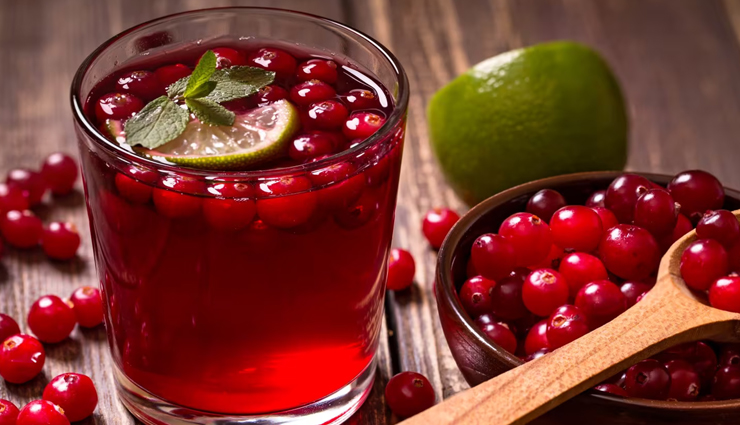
# Cranberries
Cranberries contain a modest amount of vitamin C. A one-cup (about 100 grams) serving of fresh cranberries provides approximately 13 milligrams (mg) of vitamin C, which is around 14% of the recommended daily intake for most adults. While cranberries are not as rich in vitamin C as some other fruits, they still contribute to your daily vitamin C intake.
How to Incorporate Cranberries into Your Diet:
Fresh Cranberries: Fresh cranberries can be used in various culinary applications. They are often used to make cranberry sauce for Thanksgiving dinners. To use them, rinse and cook them with sugar and water until they burst and form a sauce.
Dried Cranberries: Dried cranberries are commonly added to salads, trail mixes, and baked goods for a sweet and tart flavor. Keep in mind that dried cranberries may contain added sugar.
Cranberry Juice: Cranberry juice is available as a beverage and is often consumed for its potential urinary tract health benefits. Be sure to choose 100% pure cranberry juice without added sugars.
Cranberry Supplements: Cranberry supplements, including capsules and tablets, are available for those looking to harness the potential benefits of cranberries without consuming them as a whole fruit.
Cranberry Compote: Make a cranberry compote by cooking fresh cranberries with sugar and spices. This can be used as a topping for yogurt, oatmeal, or desserts.
Cranberry Smoothies: Blend cranberries with other fruits, yogurt, and a bit of honey or orange juice to create a tangy and refreshing smoothie.
Cranberry Bread or Muffins: Incorporate dried cranberries into bread or muffin recipes for added flavor and a hint of tartness.
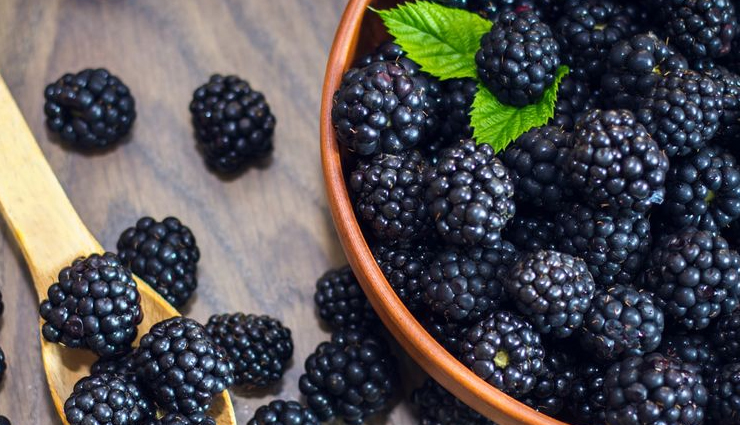
# Blackberries
Blackberries contain a decent amount of vitamin C. A one-cup (about 144 grams) serving of fresh blackberries typically provides approximately 30 milligrams (mg) of vitamin C, which is around 33% of the recommended daily intake for most adults.
How to Incorporate Blackberries into Your Diet:
Fresh Blackberries: Enjoy fresh blackberries as a snack on their own or add them to fruit salads for a burst of color and flavor.
Blackberry Smoothies: Blend fresh or frozen blackberries with other fruits, yogurt, and a bit of honey or juice to create a delicious and vitamin C-rich smoothie.
Blackberry Parfaits: Layer blackberries with yogurt and granola for a nutritious and visually appealing parfait.
Blackberry Jam or Preserves: Make homemade blackberry jam or preserves to spread on toast, muffins, or pancakes.
Blackberry Desserts: Incorporate blackberries into desserts like pies, cobblers, tarts, or cheesecakes for a sweet and tangy flavor.
Blackberry Sauce: Puree blackberries with a bit of sugar and strain to create a flavorful sauce for drizzling over desserts or savory dishes.
Blackberry Salads: Add fresh blackberries to green salads for a unique twist. They pair well with ingredients like feta cheese and nuts.
Blackberry Oatmeal: Stir blackberries into your morning oatmeal for a fruity and nutritious breakfast.
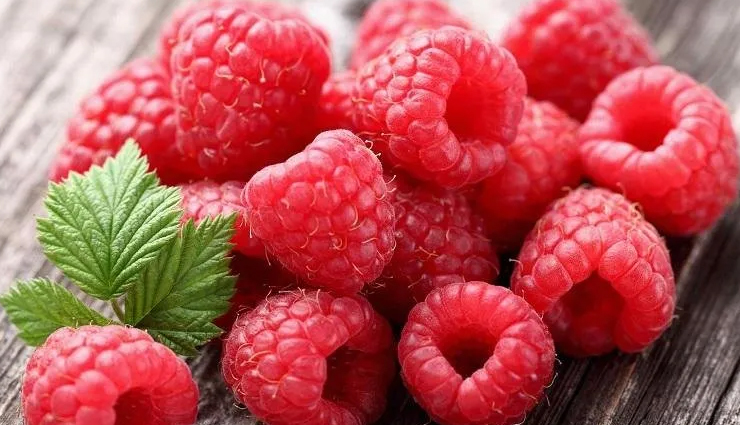
# Raspberries
Raspberries contain a good amount of vitamin C. A one-cup (about 123 grams) serving of fresh raspberries typically provides approximately 32 milligrams (mg) of vitamin C, which is around 35% of the recommended daily intake for most adults.
How to Incorporate Raspberries into Your Diet:
Fresh Raspberries: Enjoy fresh raspberries as a sweet and tangy snack on their own or as part of a fruit salad.
Raspberry Smoothies: Blend fresh or frozen raspberries with other fruits, yogurt, and a bit of honey or juice to create a flavorful and vitamin C-rich smoothie.
Raspberry Parfaits: Layer raspberries with yogurt and granola for a nutritious and visually appealing parfait.
Raspberry Jam or Preserves: Make homemade raspberry jam or preserves to spread on toast, muffins, or scones.
Raspberry Desserts: Incorporate raspberries into desserts like pies, cobblers, tarts, or chocolate fondue for a burst of fruity flavor.
Raspberry Sauce: Puree raspberries with a bit of sugar and strain to create a versatile sauce for drizzling over desserts, pancakes, or waffles.
Raspberry Salads: Add fresh raspberries to green salads for a refreshing and tangy element. They pair well with ingredients like goat cheese and nuts.
Raspberry Oatmeal: Stir raspberries into your morning oatmeal for a delightful and nutritious breakfast.
Raspberry Vinaigrette: Make a homemade raspberry vinaigrette by blending raspberries with vinegar, olive oil, honey, and a touch of Dijon mustard for a flavorful salad dressing.
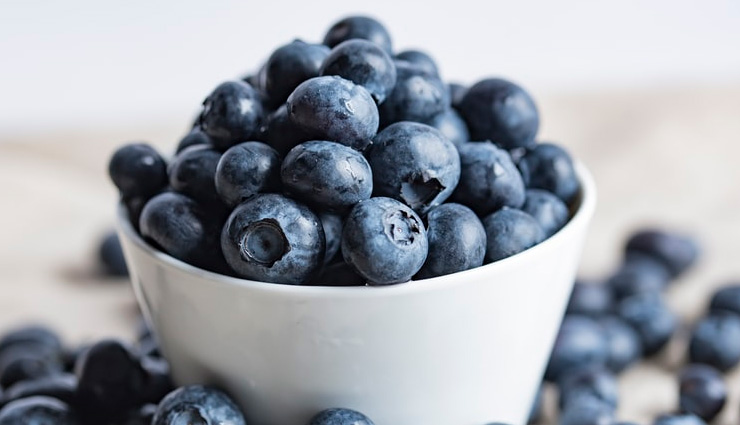
# Blueberries
Blueberries contain a modest amount of vitamin C. A one-cup (about 148 grams) serving of fresh blueberries typically provides approximately 14 milligrams (mg) of vitamin C, which is around 16% of the recommended daily intake for most adults. While they are not exceptionally high in vitamin C compared to some other fruits, blueberries are still a valuable source of this essential nutrient.
How to Incorporate Blueberries into Your Diet:
Fresh Blueberries: Enjoy fresh blueberries as a sweet and nutritious snack on their own or as part of a fruit salad.
Blueberry Smoothies: Blend fresh or frozen blueberries with other fruits, yogurt, and a bit of honey or juice to create a delicious and vitamin C-rich smoothie.
Blueberry Parfaits: Layer blueberries with yogurt and granola for a visually appealing and nutritious parfait.
Blueberry Muffins: Bake blueberries into muffins, pancakes, or waffles for a tasty breakfast or snack.
Blueberry Sauce: Cook fresh or frozen blueberries with a bit of sugar to create a delightful sauce for topping pancakes, ice cream, or desserts.
Blueberry Salads: Add fresh blueberries to green salads for a pop of color and sweetness. They pair well with ingredients like feta cheese and nuts.
Blueberry Oatmeal: Stir blueberries into your morning oatmeal or cereal for added flavor and nutritional value.
Blueberry Desserts: Incorporate blueberries into desserts like pies, cobblers, tarts, or yogurt parfaits for a fruity twist.
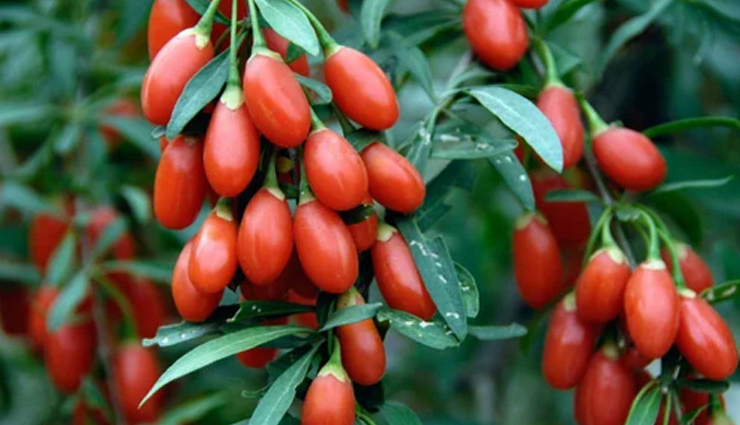
# Goji Berries
Goji berries contain a modest amount of vitamin C. A one-ounce (about 28 grams) serving of dried goji berries typically provides approximately 14 milligrams (mg) of vitamin C, which is around 15% of the recommended daily intake for most adults. While they may not be as high in vitamin C as some other fruits, goji berries are still a nutritious addition to your diet.
How to Incorporate Goji Berries into Your Diet:
Dried Goji Berries: Enjoy dried goji berries as a snack on their own or add them to trail mixes, cereal, or oatmeal.
Goji Berry Smoothies: Blend dried goji berries with other fruits, yogurt, and a bit of honey or juice to create a nutrient-rich smoothie.
Goji Berry Tea: Steep dried goji berries in hot water to make goji berry tea. This is a soothing and nutritious beverage.
Goji Berry Toppings: Sprinkle dried goji berries over yogurt, salads, or desserts to add a sweet and tangy flavor.
Goji Berry Trail Mix: Combine dried goji berries with nuts, seeds, and other dried fruits to create a homemade trail mix.
Goji Berry Baking: Incorporate dried goji berries into baked goods like muffins, cookies, or energy bars for added flavor and nutrition.
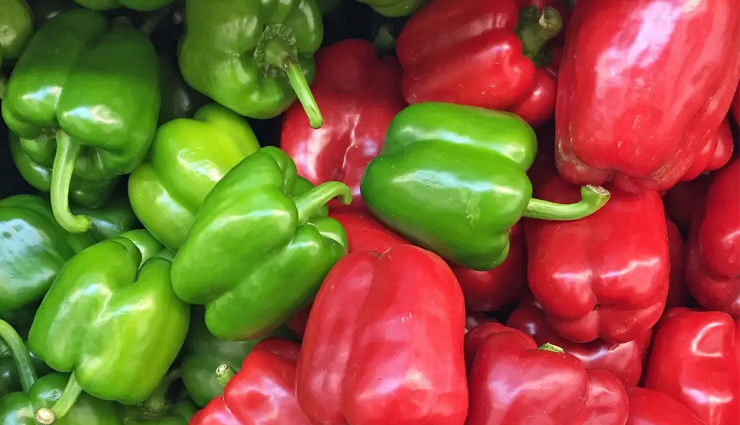
# Red and Green Bell Peppers
Both red and green bell peppers are rich in vitamin C, but red bell peppers generally contain more vitamin C than their green counterparts. Here's a rough estimate of the vitamin C content in 1 cup (about 149 grams) of raw bell pepper:
Red Bell Pepper: Approximately 190 milligrams (mg) of vitamin C (over 200% of the recommended daily intake for most adults).
Green Bell Pepper: Approximately 95 mg of vitamin C (around 100% of the recommended daily intake for most adults).
How to Incorporate Bell Peppers into Your Diet:
Raw Bell Pepper Strips: Enjoy bell pepper strips as a crunchy and vitamin C-rich snack. Dip them in hummus or a yogurt-based dip for added flavor.
Bell Pepper Slices in Salads: Add sliced bell peppers to green salads, pasta salads, or coleslaw for a burst of color and flavor.
Stuffed Bell Peppers: Hollow out bell peppers and fill them with a mixture of cooked grains, vegetables, and protein for a nutritious and flavorful meal.
Bell Pepper Stir-Fry: Include bell pepper strips in stir-fry dishes with other vegetables, tofu, or meat.
Bell Pepper Sauté: Sauté bell pepper slices with onions and garlic as a flavorful base for various dishes, such as pasta sauces, fajitas, or omelets.
Bell Pepper Dips: Roast bell peppers and blend them with ingredients like garlic, olive oil, and tahini to make a roasted red pepper dip.
Grilled Bell Peppers: Grill bell pepper halves until they are charred and tender. Drizzle with balsamic vinegar and serve as a side dish.
Bell Pepper Soups: Add diced bell peppers to soups, such as tomato soup or chili, for added flavor and nutrition.
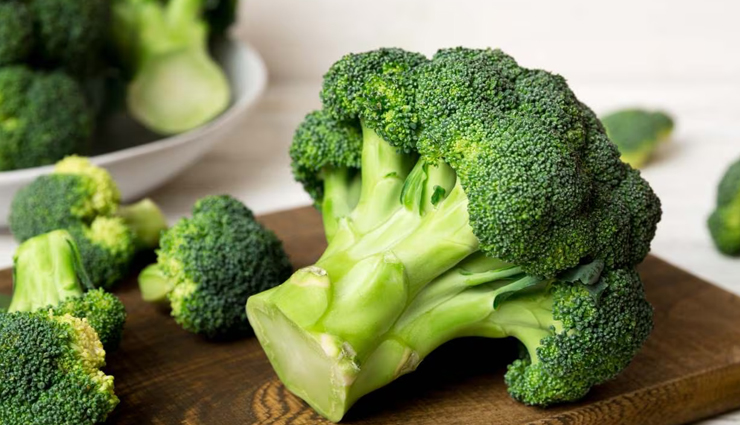
# Broccoli
Broccoli is an excellent source of vitamin C. A one-cup (about 91 grams) serving of cooked broccoli typically provides approximately 81 milligrams (mg) of vitamin C, which is around 90% of the recommended daily intake for most adults. This makes broccoli one of the top vegetable sources of vitamin C.
How to Incorporate Broccoli into Your Diet:
Steamed or Boiled Broccoli: Steam or boil broccoli until tender, and serve it as a simple side dish. You can season it with a sprinkle of salt, a drizzle of olive oil, or a squeeze of lemon juice.
Roasted Broccoli: Toss broccoli florets with olive oil, garlic, salt, and pepper, then roast in the oven until they are slightly crispy and caramelized.
Broccoli Salads: Add chopped raw or blanched broccoli to green salads or pasta salads for a nutritious crunch.
Broccoli Stir-Fry: Include broccoli florets in stir-fry dishes with other vegetables, tofu, or meat. A simple stir-fry sauce can add flavor.
Broccoli Soups: Blend cooked broccoli with onions, garlic, and vegetable broth to make a creamy broccoli soup.
Broccoli and Cheese: Steam broccoli and top it with grated cheese for a tasty and nutritious side dish.
Broccoli Casseroles: Incorporate broccoli into casseroles with ingredients like chicken, rice, and cheese for a hearty meal.
Broccoli Pesto: Create a broccoli pesto by blending cooked broccoli with garlic, nuts, Parmesan cheese, and olive oil. Use it as a sauce for pasta or a dip for bread.
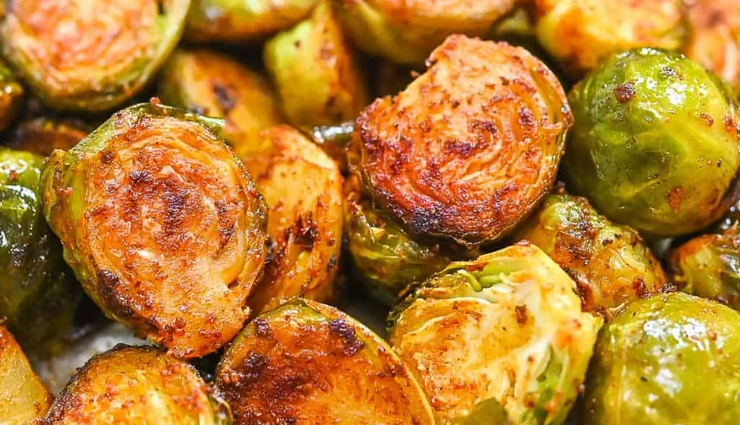
# Brussels Sprouts
Brussels sprouts are a respectable source of vitamin C. A one-cup (about 156 grams) serving of cooked Brussels sprouts typically provides approximately 48 milligrams (mg) of vitamin C, which is around 53% of the recommended daily intake for most adults. While they may not be as rich in vitamin C as some other vegetables, Brussels sprouts offer a variety of health benefits.
How to Incorporate Brussels Sprouts into Your Diet:
Roasted Brussels Sprouts: Toss Brussels sprouts with olive oil, garlic, salt, and pepper, then roast them in the oven until they are crispy and caramelized. You can add bacon, Parmesan cheese, or balsamic glaze for extra flavor.
Steamed Brussels Sprouts: Steam Brussels sprouts until they are tender, and serve them as a simple side dish with a sprinkle of salt or a drizzle of lemon juice.
Brussels Sprouts Stir-Fry: Include Brussels sprouts in stir-fry dishes with other vegetables, tofu, or meat. A flavorful stir-fry sauce can enhance the dish.
Brussels Sprouts Salads: Shred raw Brussels sprouts and add them to salads for a nutritious crunch. You can also blanch or roast them slightly for a milder flavor.
Brussels Sprouts Soup: Use cooked Brussels sprouts as a base for creamy vegetable soups. Combine them with onions, garlic, and vegetable broth, then blend until smooth.
Balsamic Brussels Sprouts: Sauté Brussels sprouts with balsamic vinegar, shallots, and a touch of honey for a sweet and tangy side dish.
Brussels Sprouts Hash: Shred Brussels sprouts and sauté them with onions, garlic, and diced potatoes for a hearty breakfast hash.
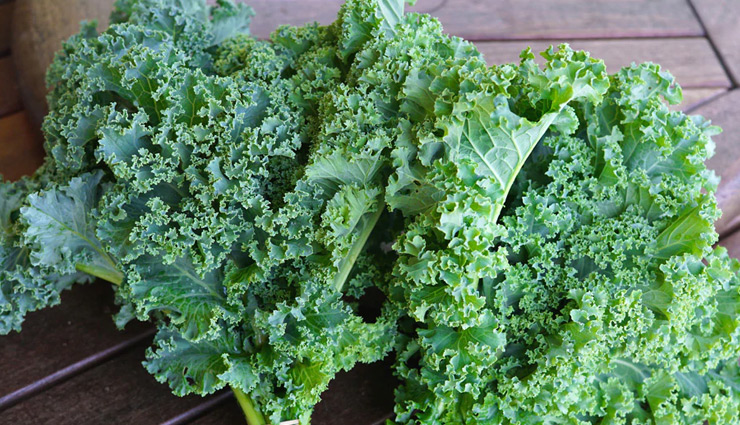
# Kale
Kale is an excellent source of vitamin C. A one-cup (about 67 grams) serving of raw kale typically provides approximately 80 milligrams (mg) of vitamin C, which is around 89% of the recommended daily intake for most adults. This makes kale one of the top vegetable sources of vitamin C.
How to Incorporate Kale into Your Diet:
Kale Salads: Use raw kale as the base for salads. Massage the kale leaves with a bit of olive oil and lemon juice to soften them. Add your favorite salad ingredients and dressing.
Kale Smoothies: Blend kale leaves with other fruits, such as bananas, berries, and oranges, to create a nutritious and vitamin C-rich smoothie.
Kale Chips: Bake kale leaves with a drizzle of olive oil and a sprinkle of salt to make crispy kale chips. They make a healthy snack.
Kale Soups: Add chopped kale to soups and stews during the last few minutes of cooking to incorporate its nutritional benefits.
Sautéed Kale: Sauté kale with garlic, onions, and a touch of olive oil for a tasty and nutritious side dish.
Kale Pesto: Make kale pesto by blending kale with garlic, nuts, Parmesan cheese, olive oil, and lemon juice. Use it as a sauce for pasta, pizza, or sandwiches.
Kale Smoothie Bowls: Top smoothie bowls with fresh kale leaves, sliced fruits, nuts, and seeds for a healthy and visually appealing breakfast.
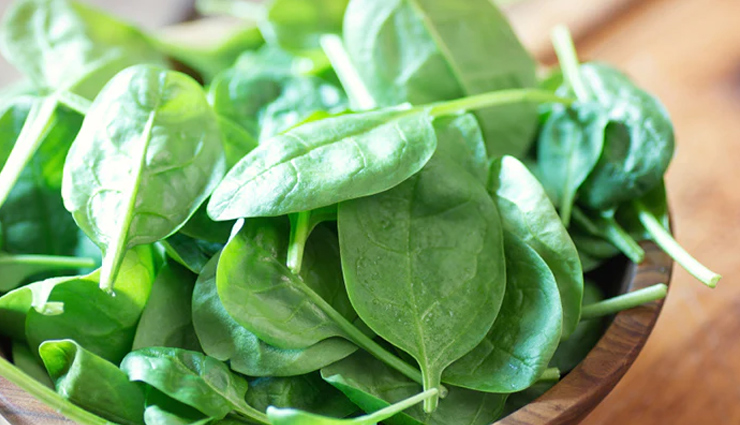
# Spinach
Spinach is a source of vitamin C, although it is not as rich in this vitamin as some other vegetables. A one-cup (about 30 grams) serving of raw spinach typically provides approximately 8 milligrams (mg) of vitamin C, which is around 9% of the recommended daily intake for most adults. While spinach may not be exceptionally high in vitamin C, it contributes to your daily intake of this essential nutrient.
How to Incorporate Spinach into Your Diet:
Spinach Salads: Use fresh spinach leaves as the base for salads. Top them with a variety of vegetables, fruits, nuts, and your favorite salad dressing.
Spinach Smoothies: Blend fresh or frozen spinach into smoothies with fruits like bananas, berries, and mangoes for added nutrition.
Sautéed Spinach: Sauté spinach with garlic, olive oil, and a pinch of salt for a quick and healthy side dish.
Spinach Pasta: Add wilted spinach to pasta dishes, whether it's a classic spaghetti recipe or a creamy pasta sauce.
Spinach Soups: Incorporate spinach into soups and stews to boost their nutritional content. Spinach pairs well with tomato-based soups.
Spinach Omelets: Add cooked spinach to omelets or scrambled eggs for a nutritious and flavorful breakfast.
Spinach Pizza or Flatbreads: Top pizzas or flatbreads with spinach leaves for a healthy and tasty twist.
Stuffed Spinach: Use spinach as a filling for stuffed chicken breasts, mushrooms, or bell peppers.
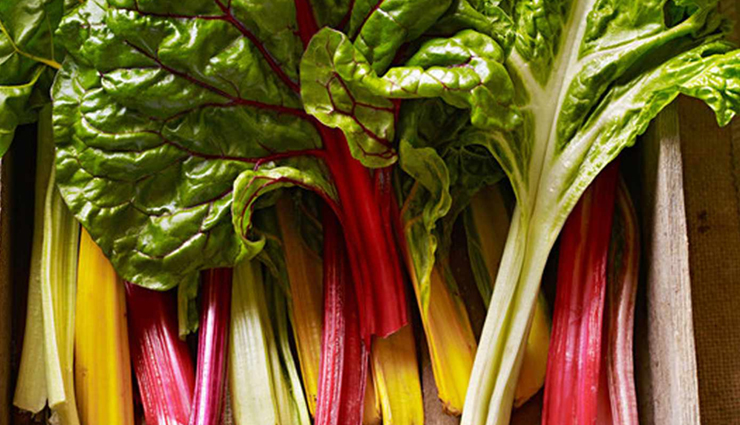
# Swiss Chard
Swiss chard is a source of vitamin C, although it may not be as rich in this vitamin as some other greens. A one-cup (about 175 grams) serving of cooked Swiss chard typically provides approximately 31 milligrams (mg) of vitamin C, which is around 34% of the recommended daily intake for most adults. While Swiss chard may not be exceptionally high in vitamin C, it is still a nutritious addition to your diet.
How to Incorporate Swiss Chard into Your Diet:
Sautéed Swiss Chard: Sauté Swiss chard leaves with garlic, olive oil, and a pinch of salt for a quick and healthy side dish.
Swiss Chard Salad: Use raw Swiss chard leaves as the base for salads. Combine them with other vegetables, fruits, nuts, and your preferred dressing.
Swiss Chard Smoothies: Blend fresh or frozen Swiss chard into smoothies with fruits like bananas, berries, and oranges for added nutrition.
Swiss Chard Wraps: Use Swiss chard leaves as a healthier alternative to tortillas or bread when making wraps or sandwiches.
Swiss Chard Pasta: Add chopped and cooked Swiss chard to pasta dishes, whether it's a traditional spaghetti recipe or a creamy pasta sauce.
Swiss Chard Soups: Incorporate Swiss chard into soups and stews to enhance their nutritional content. It pairs well with beans and potatoes in soups.
Swiss Chard Pizza: Top pizzas or flatbreads with chopped Swiss chard leaves for a nutritious and flavorful topping.
Stuffed Swiss Chard: Use Swiss chard leaves as a wrapper for stuffing with ingredients like grains, vegetables, and cheese.
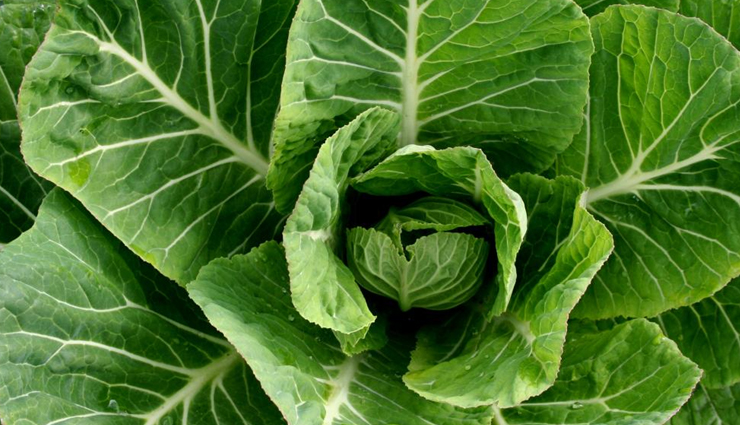
# Collard Greens
Collard greens are a source of vitamin C, although they may not be as rich in this vitamin as some other greens. A one-cup (about 190 grams) serving of cooked collard greens typically provides approximately 35 milligrams (mg) of vitamin C, which is around 39% of the recommended daily intake for most adults. While collard greens may not be exceptionally high in vitamin C, they offer various health benefits.
How to Incorporate Collard Greens into Your Diet:
Sautéed Collard Greens: Sauté collard greens with garlic, onions, and a bit of olive oil for a flavorful and nutritious side dish.
Collard Green Wraps: Use collard green leaves as a wrapper for making healthy wraps or sandwiches. They are a lower-carb alternative to tortillas or bread.
Collard Green Smoothies: Blend fresh or frozen collard greens into smoothies with fruits like bananas, berries, and pineapples for added nutrition.
Collard Green Salads: Incorporate raw or blanched collard greens into salads, either on their own or mixed with other greens and veggies.
Collard Green Soups: Add chopped collard greens to soups and stews to boost their nutritional content. They pair well with beans and potatoes in soups.
Collard Green Chips: Bake collard green leaves with a drizzle of olive oil and a sprinkle of salt to make crispy and healthy chips.
Collard Green Pasta: Mix cooked and chopped collard greens into pasta dishes, whether it's a classic spaghetti recipe or a creamy pasta sauce.
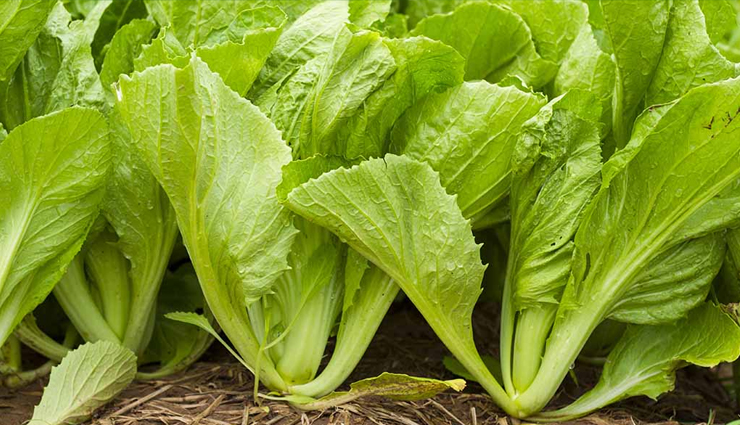
# Mustard Greens
Mustard greens are a source of vitamin C, although they may not be as rich in this vitamin as some other greens. A one-cup (about 140 grams) serving of cooked mustard greens typically provides approximately 14 milligrams (mg) of vitamin C, which is around 16% of the recommended daily intake for most adults. While mustard greens may not be exceptionally high in vitamin C, they contribute to your daily intake of this essential nutrient.
How to Incorporate Mustard Greens into Your Diet:
Sautéed Mustard Greens: Sauté mustard greens with garlic, onions, and a bit of olive oil for a flavorful and nutritious side dish.
Mustard Green Salads: Use raw or blanched mustard greens as the base for salads. Combine them with other greens, vegetables, fruits, nuts, and your preferred dressing.
Mustard Green Smoothies: Blend fresh or frozen mustard greens into smoothies with fruits like bananas, apples, and pineapples for added nutrition.
Mustard Green Soups: Add chopped mustard greens to soups and stews to enhance their nutritional content. They pair well with lentils and tomatoes in soups.
Mustard Green Wraps: Use mustard green leaves as a wrapper for making healthy wraps or sandwiches. They provide a unique, peppery flavor.
Mustard Green Chips: Bake mustard green leaves with a drizzle of olive oil and a sprinkle of salt to make crispy and nutritious chips.
Mustard Green Stir-Fry: Include mustard greens in stir-fry dishes with other vegetables, tofu, or meat. A flavorful stir-fry sauce can enhance the dish.
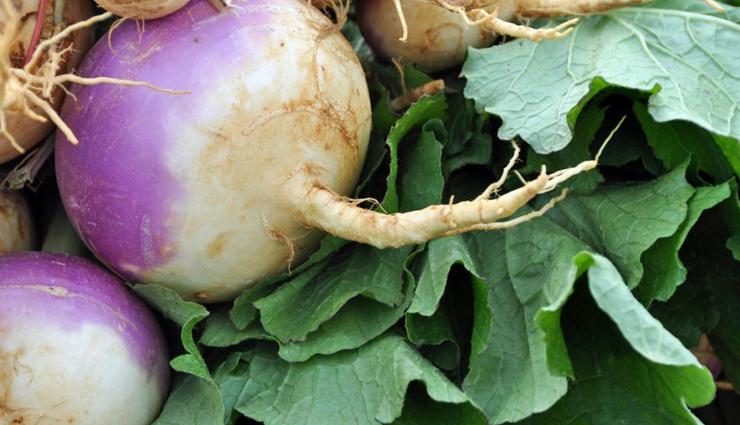
# Turnip Greens
Turnip greens are a source of vitamin C, although they may not be as rich in this vitamin as some other greens. A one-cup (about 55 grams) serving of cooked turnip greens typically provides approximately 14 milligrams (mg) of vitamin C, which is around 16% of the recommended daily intake for most adults. While turnip greens may not be exceptionally high in vitamin C, they offer various health benefits.
How to Incorporate Turnip Greens into Your Diet:
Sautéed Turnip Greens: Sauté turnip greens with garlic, onions, and a bit of olive oil for a flavorful and nutritious side dish.
Turnip Green Salads: Use raw or blanched turnip greens as the base for salads. Combine them with other greens, vegetables, fruits, nuts, and your preferred dressing.
Turnip Green Smoothies: Blend fresh or frozen turnip greens into smoothies with fruits like bananas, berries, and mangoes for added nutrition.
Turnip Green Soups: Add chopped turnip greens to soups and stews to boost their nutritional content. They pair well with beans and potatoes in soups.
Turnip Green Wraps: Use turnip green leaves as a wrapper for making healthy wraps or sandwiches. They provide a unique, slightly peppery flavor.
Turnip Green Chips: Bake turnip green leaves with a drizzle of olive oil and a sprinkle of salt to make crispy and nutritious chips.
Turnip Green Stir-Fry: Include turnip greens in stir-fry dishes with other vegetables, tofu, or meat. A flavorful stir-fry sauce can enhance the dish.
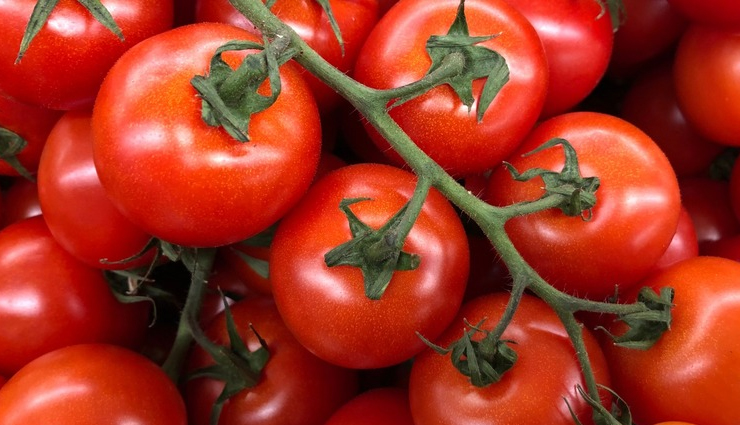
# Tomatoes
Tomatoes are a source of vitamin C, with their vitamin C content varying based on factors like the variety of tomato and its ripeness. On average, a medium-sized tomato (about 123 grams) typically contains approximately 16 milligrams (mg) of vitamin C, which is around 18% of the recommended daily intake for most adults.
How to Incorporate Tomatoes into Your Diet:
Fresh Tomato Slices: Enjoy tomato slices in sandwiches, burgers, or as a side dish with a sprinkle of salt and pepper.
Tomato Salads: Make tomato salads by combining sliced or diced tomatoes with fresh basil, mozzarella cheese, olive oil, and balsamic vinegar.
Tomato Salsa: Prepare fresh tomato salsa with diced tomatoes, onions, cilantro, lime juice, and spices to accompany chips or as a topping for various dishes.
Tomato Soups: Create tomato soups, such as classic tomato bisque or tomato and basil soup, for a comforting and nutritious meal.
Tomato Sauces: Use tomatoes to make homemade pasta sauces, pizza sauces, or marinades for meats and vegetables.
Tomato Juices and Smoothies: Blend fresh tomatoes with other fruits and vegetables to make refreshing juices and smoothies.
Stuffed Tomatoes: Hollow out tomatoes and stuff them with mixtures of grains, vegetables, or proteins for a flavorful and healthy dish.
Roasted Tomatoes: Roast tomatoes with olive oil, garlic, and herbs for a sweet and concentrated flavor. They can be served as a side dish, added to pasta, or used in sandwiches.
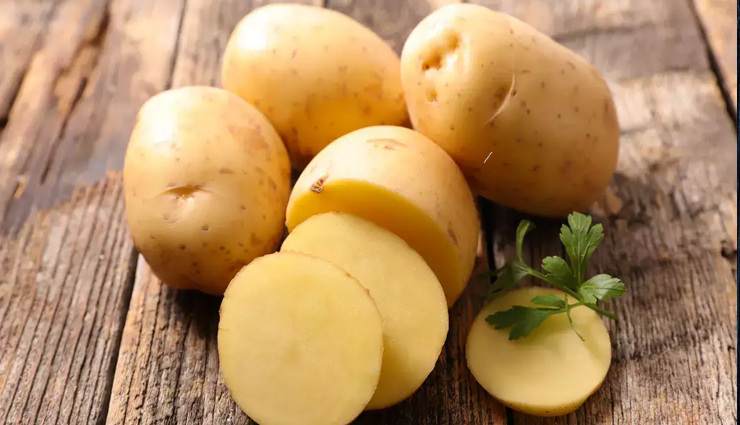
# Potatoes
Potatoes are a source of vitamin C, but the content can vary depending on the variety of potato and its preparation. On average, a medium-sized potato (about 150 grams) typically provides approximately 20 milligrams (mg) of vitamin C, which is around 22% of the recommended daily intake for most adults.
How to Incorporate Potatoes into Your Diet:
Boiled or Mashed Potatoes: Boil or mash potatoes for a classic side dish. You can add butter, milk, herbs, or seasonings for flavor.
Roasted Potatoes: Roast potatoes with olive oil, garlic, rosemary, and a pinch of salt for a crispy and flavorful side dish.
French Fries or Potato Wedges: Prepare homemade fries or wedges by cutting potatoes into sticks, seasoning them, and baking or frying until golden and crispy.
Potato Soups: Make creamy potato soups, like potato leek soup or loaded baked potato soup, for a hearty and satisfying meal.
Potato Salads: Create potato salads with boiled and diced potatoes, mayonnaise or vinaigrette, onions, celery, and your choice of herbs and spices.
Potato Hash: Make potato hash by sautéing diced potatoes with onions, peppers, and other vegetables, then adding eggs for a delicious breakfast or brunch option.
Potato Skins: Bake potato skins and fill them with cheese, bacon, sour cream, and chives for a tasty appetizer.
Potato Pancakes: Prepare potato pancakes by shredding potatoes, mixing them with eggs and seasonings, and frying them until crispy and golden brown.
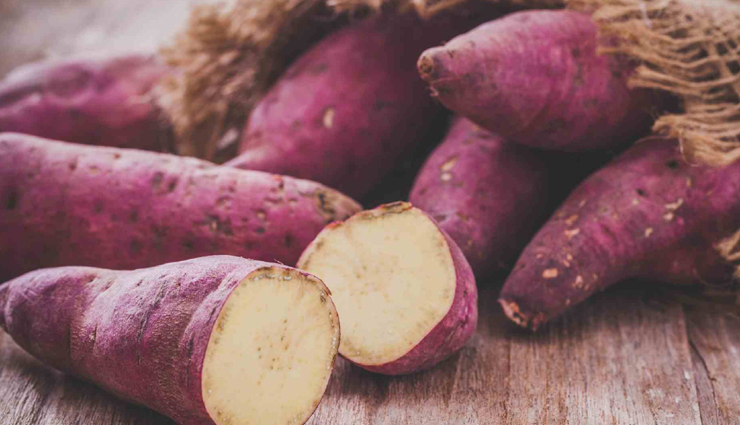
# Sweet Potatoes
Sweet potatoes are a source of vitamin C, with the content varying depending on factors like the size and variety of sweet potato. On average, a medium-sized sweet potato (about 150 grams) typically provides approximately 22 milligrams (mg) of vitamin C, which is around 24% of the recommended daily intake for most adults.
How to Incorporate Sweet Potatoes into Your Diet:
Baked or Roasted Sweet Potatoes: Bake or roast sweet potatoes until they are tender and caramelized. You can enjoy them as a side dish with a sprinkle of cinnamon or a drizzle of maple syrup.
Sweet Potato Fries: Make homemade sweet potato fries by cutting sweet potatoes into sticks, seasoning them, and baking or frying until crispy.
Mashed Sweet Potatoes: Create mashed sweet potatoes by boiling and mashing them with a bit of butter, cinnamon, and a touch of brown sugar.
Sweet Potato Soups: Prepare sweet potato soups, such as a creamy sweet potato and carrot soup or a spicy sweet potato soup with chili and lime.
Sweet Potato Casseroles: Make sweet potato casseroles by layering slices of sweet potatoes with ingredients like pecans, marshmallows, and spices, then baking until bubbly.
Stuffed Sweet Potatoes: Hollow out baked sweet potatoes and stuff them with ingredients like black beans, cheese, avocado, and salsa.
Sweet Potato Pancakes: Prepare sweet potato pancakes by mixing grated sweet potato with pancake batter for a nutritious breakfast option.
Sweet Potato Salad: Create sweet potato salads by combining roasted sweet potatoes with a vinaigrette, fresh herbs, and other vegetables.

# Winter Squash
Winter squash varieties, such as butternut, acorn, and spaghetti squash, are sources of vitamin C. The vitamin C content can vary depending on the type and size of the squash. On average, one cup (about 205 grams) of cooked winter squash typically provides approximately 17 milligrams (mg) of vitamin C, which is around 19% of the recommended daily intake for most adults.
How to Incorporate Winter Squash into Your Diet:
Roasted Winter Squash: Roast cubed or halved winter squash with olive oil, herbs, and spices until it's tender and slightly caramelized.
Winter Squash Soups: Make creamy winter squash soups by blending cooked squash with broth, spices, and cream for a comforting and nutritious meal.
Stuffed Winter Squash: Hollow out cooked winter squash and stuff them with mixtures of grains, vegetables, or proteins for a flavorful and healthy dish.
Squash Puree: Create squash puree by blending cooked squash until smooth. It can be used as a side dish or ingredient in various recipes.
Winter Squash Pasta: Use spiralized or thinly sliced winter squash as a pasta alternative in dishes like butternut squash noodles with sage and brown butter.
Squash Risotto: Add cooked and mashed winter squash to risotto dishes for a creamy and flavorful twist.
Squash Salads: Incorporate roasted or steamed squash into salads for added texture, flavor, and nutrition.

# Straw Mushrooms
Straw mushrooms contain a small amount of vitamin C. A one-cup (about 156 grams) serving of cooked straw mushrooms typically provides approximately 1.2 milligrams (mg) of vitamin C, which is around 1% of the recommended daily intake for most adults. While straw mushrooms may not be exceptionally high in vitamin C, they are valued for their flavor and texture in various dishes.
How to Incorporate Straw Mushrooms into Your Diet:
Straw mushrooms have a delicate and slightly nutty flavor, making them a popular choice in Asian cooking. Here are some ways to use straw mushrooms in your dishes:
Stir-Fries: Add sliced or whole straw mushrooms to stir-fries with a variety of vegetables, proteins, and your favorite stir-fry sauce.
Soups and Broths: Include straw mushrooms in Asian-style soups and broths, such as hot and sour soup or miso soup, for added flavor and texture.
Curries: Incorporate straw mushrooms into curry dishes for their unique taste and ability to absorb the flavors of the curry sauce.
Noodle Dishes: Add sliced or whole straw mushrooms to noodle dishes like ramen or Thai-style pad Thai.
Salads: Use canned or fresh straw mushrooms in salads for their mild flavor and tender texture.
Spring Rolls: Include straw mushrooms in homemade spring rolls or summer rolls for added taste and texture.
Mushroom Dips: Blend straw mushrooms with herbs, spices, and cream cheese or yogurt to make a flavorful mushroom dip or spread.
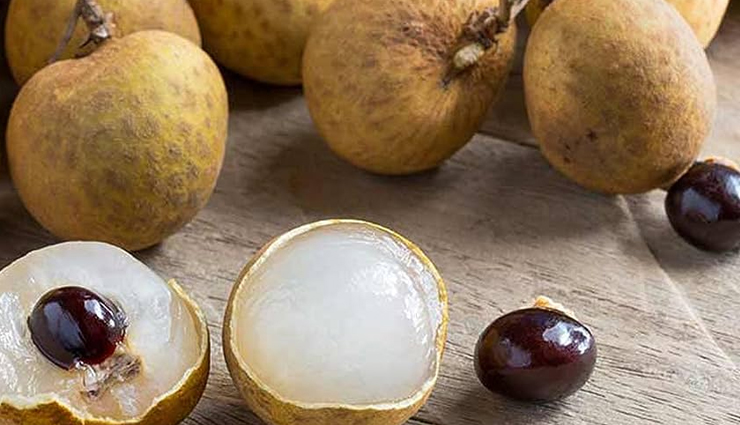
# Longan
Longan contains a small to moderate amount of vitamin C. A one-cup (about 200 grams) serving of fresh longan typically provides approximately 15 milligrams (mg) of vitamin C, which is around 17% of the recommended daily intake for most adults. While longan may not be exceptionally high in vitamin C, it is enjoyed for its unique flavor and sweetness.
How to Incorporate Longan into Your Diet:
Fresh Snack: Simply peel and eat fresh longan as a sweet and refreshing snack.
Fruit Salad: Include fresh longan in fruit salads to add sweetness and a different texture to the mix.
Desserts: Use longan as a topping for ice cream, yogurt, or puddings to enhance their flavor.
Beverages: Add fresh or frozen longan to smoothies, fruit juices, or iced teas for a delightful and exotic twist.
Cooking: Longan can be used in various savory dishes, especially in Southeast Asian cooking. It pairs well with meats, seafood, and vegetables in stir-fries or soups.
Candied Longan: Make candied longan by simmering them in a sugar syrup until they become sweet and slightly chewy. These can be enjoyed as a dessert or snack.
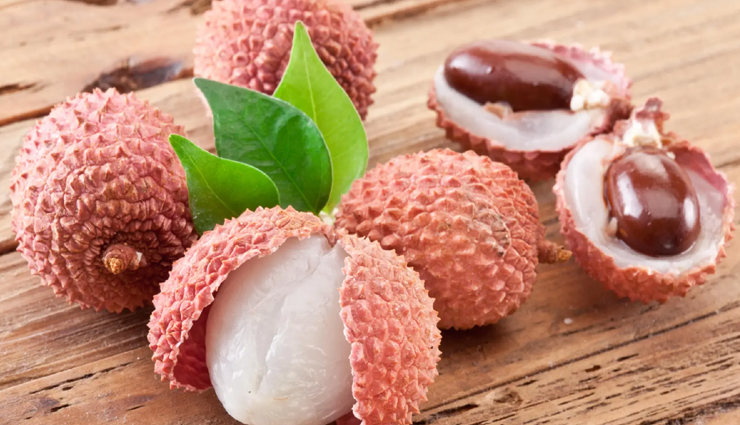
# Lychee
Lychee contains a small to moderate amount of vitamin C. A one-cup (about 190 grams) serving of fresh lychee typically provides approximately 136 milligrams (mg) of vitamin C, which is around 151% of the recommended daily intake for most adults. While lychee may not be exceptionally high in vitamin C compared to some other fruits, it is enjoyed for its unique flavor and sweetness.
How to Incorporate Lychee into Your Diet:
Fresh Snack: Simply peel and eat fresh lychee as a sweet and juicy snack.
Fruit Salad: Include fresh lychee in fruit salads to add a burst of flavor and sweetness.
Desserts: Use lychee in desserts like fruit tarts, sorbets, or puddings for a delightful tropical twist.
Beverages: Blend fresh lychee into smoothies, fruit juices, or cocktails to infuse them with a unique tropical flavor.
Cocktail Garnish: Use whole lychee or lychee slices as a garnish for cocktails, such as lychee martinis.
Salsas: Dice fresh lychee and combine them with ingredients like red onion, cilantro, lime juice, and jalapeño for a sweet and spicy salsa.
Chutneys: Make lychee chutney by cooking lychee with sugar, vinegar, and spices. It pairs well with grilled meats or as a condiment.
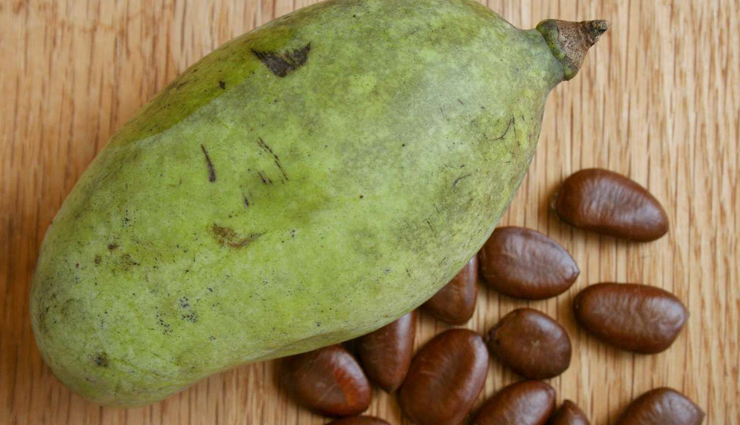
# Pawpaw
Pawpaw is a notable source of vitamin C. A one-cup (about 145 grams) serving of fresh pawpaw typically provides approximately 88 milligrams (mg) of vitamin C, which is around 98% of the recommended daily intake for most adults. This makes pawpaw an excellent choice for those looking to increase their vitamin C intake.
How to Incorporate Pawpaw into Your Diet:
Fresh Fruit: Simply peel, seed, and slice fresh pawpaw for a sweet and juicy snack.
Fruit Salad: Add pawpaw chunks to fruit salads to enhance their flavor and nutritional content.
Smoothies: Blend fresh or frozen pawpaw with other fruits like bananas, mangoes, or pineapples for a tropical and nutritious smoothie.
Desserts: Use pawpaw in desserts like fruit sorbets, ice creams, or pies for a sweet and tropical twist.
Salsas: Dice pawpaw and combine it with ingredients like red onion, cilantro, lime juice, and jalapeño for a refreshing salsa.
Pawpaw Lassi: Make a pawpaw lassi by blending pawpaw with yogurt, sugar, and a pinch of cardamom for a creamy and flavorful beverage.
Pawpaw Juice: Extract pawpaw juice by blending the fruit with water and straining it. You can add a touch of honey or lime juice for extra flavor.
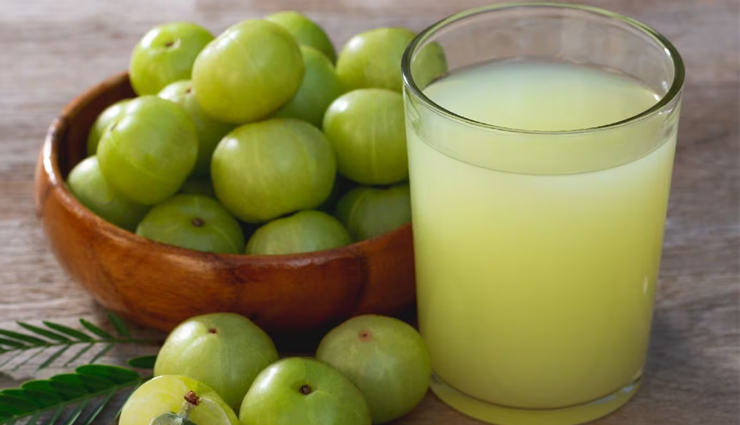
# Indian Gooseberry (Amla)
Indian gooseberry is one of the richest natural sources of vitamin C. A single fresh Indian gooseberry (about 100 grams) can provide an astonishing 600 to 700 milligrams (mg) of vitamin C, which far exceeds the daily recommended intake for most adults. This makes amla an exceptional choice for increasing your vitamin C intake.
How to Incorporate Indian Gooseberry (Amla) into Your Diet:
Fresh Amla: Simply wash and consume fresh amla by biting into it. Keep in mind that it has a sour and somewhat bitter taste.
Amla Juice: Extract the juice of fresh amla and drink it in the morning for a powerful dose of vitamin C. You can dilute it with water or mix it with honey for better taste.
Amla Chutney: Prepare amla chutney by blending fresh amla with green chilies, ginger, and other spices. It pairs well with Indian dishes.
Amla Candy: Make amla candies by drying amla slices and coating them in sugar or honey. They serve as a healthy and tangy snack.
Amla Pickle: Amla can be pickled in various ways, preserving its nutrients and flavor for an extended period.
Amla Powder: Amla powder is a convenient way to add amla to smoothies, juices, or recipes. It's also used in traditional Ayurvedic medicine.
Amla Supplements: Amla supplements, such as amla capsules or powders, are available for those who prefer a more concentrated form.
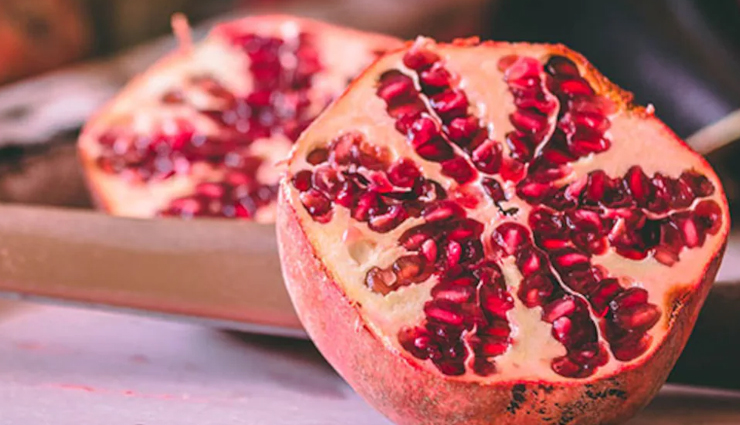
# Pomegranate
Pomegranate contains a moderate amount of vitamin C. A one-cup (about 174 grams) serving of fresh pomegranate seeds typically provides approximately 10.2 milligrams (mg) of vitamin C, which is around 11% of the recommended daily intake for most adults. While pomegranate may not be exceptionally high in vitamin C compared to some other fruits, it is valued for its unique flavor and healthful properties.
How to Incorporate Pomegranate into Your Diet:
Fresh Pomegranate Seeds: To extract the seeds (also known as arils), cut the pomegranate in half, hold each half over a bowl, and tap the back with a wooden spoon to release the seeds.
Pomegranate Juice: Extract the juice by blending the seeds and straining it. Pomegranate juice can be consumed as is or used as a base for smoothies and beverages.
Pomegranate Salads: Sprinkle fresh pomegranate seeds over salads for a burst of color, flavor, and nutrition.
Pomegranate Sauces: Use pomegranate juice or seeds to make tangy sauces for meats or desserts.
Pomegranate Molasses: Reduce pomegranate juice to create a thick and sweet-tart syrup known as pomegranate molasses, which is used in various Middle Eastern and Mediterranean dishes.
Pomegranate Smoothies: Add pomegranate seeds or juice to smoothies for a refreshing and nutritious twist.
Pomegranate Sorbet: Make homemade pomegranate sorbet by blending pomegranate juice with sugar and freezing it.
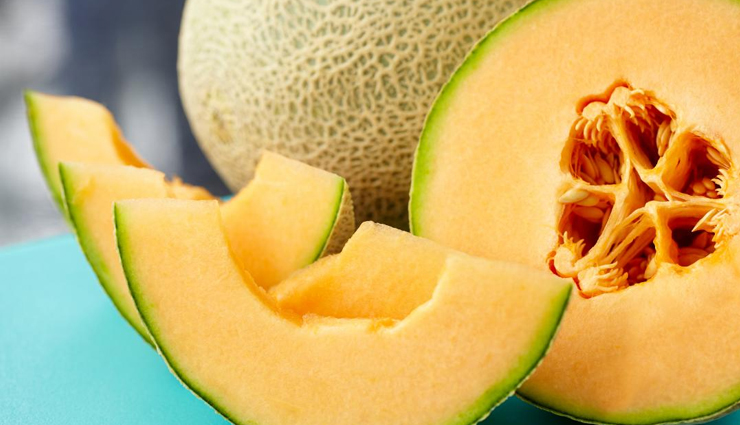
# Cantaloupe
Cantaloupe is a source of vitamin C. A one-cup (about 177 grams) serving of fresh cantaloupe typically provides approximately 64 milligrams (mg) of vitamin C, which is around 71% of the recommended daily intake for most adults. While cantaloupe may not be exceptionally high in vitamin C compared to some other fruits, it is valued for its sweet taste and hydrating properties.
How to Incorporate Cantaloupe into Your Diet:
Fresh Cantaloupe: Simply peel, seed, and slice fresh cantaloupe for a sweet and hydrating snack.
Fruit Salad: Add cubed cantaloupe to fruit salads to enhance their flavor and nutritional content.
Smoothies: Blend fresh or frozen cantaloupe with other fruits like strawberries, bananas, or yogurt for a refreshing and nutritious smoothie.
Desserts: Use cantaloupe in desserts like sorbets, fruit salads, or gelato for a naturally sweet treat.
Cantaloupe Salsa: Dice cantaloupe and combine it with ingredients like red onion, cilantro, lime juice, and jalapeño for a sweet and savory salsa.
Cantaloupe Gazpacho: Make a chilled cantaloupe gazpacho soup by blending cantaloupe with cucumber, red pepper, and herbs.
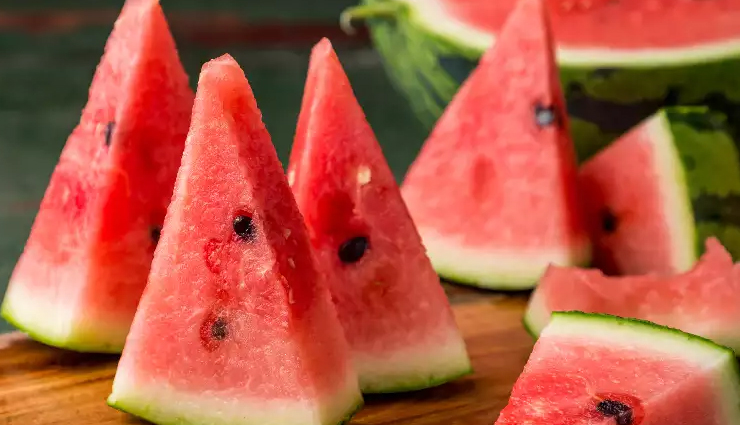
# Watermelon
Watermelon is a source of vitamin C. A one-cup (about 152 grams) serving of fresh watermelon typically provides approximately 12 milligrams (mg) of vitamin C, which is around 13% of the recommended daily intake for most adults. While watermelon may not be exceptionally high in vitamin C compared to some other fruits, it is valued for its juicy and thirst-quenching qualities.
How to Incorporate Watermelon into Your Diet:
Fresh Watermelon Slices: Simply slice fresh watermelon into wedges or cubes for a juicy and refreshing snack.
Fruit Salad: Add watermelon chunks to fruit salads to enhance their flavor and hydration.
Watermelon Smoothies: Blend fresh watermelon with other fruits like strawberries, mint, and lime juice for a cooling and hydrating smoothie.
Frozen Treats: Freeze watermelon cubes and use them as ice cubes in beverages or blend them into frozen treats like watermelon popsicles.
Watermelon Salads: Combine watermelon with ingredients like feta cheese, fresh basil, and balsamic vinegar for a sweet and savory salad.
Watermelon Salsas: Dice watermelon and combine it with ingredients like red onion, cilantro, lime juice, and jalapeño for a sweet and tangy salsa.
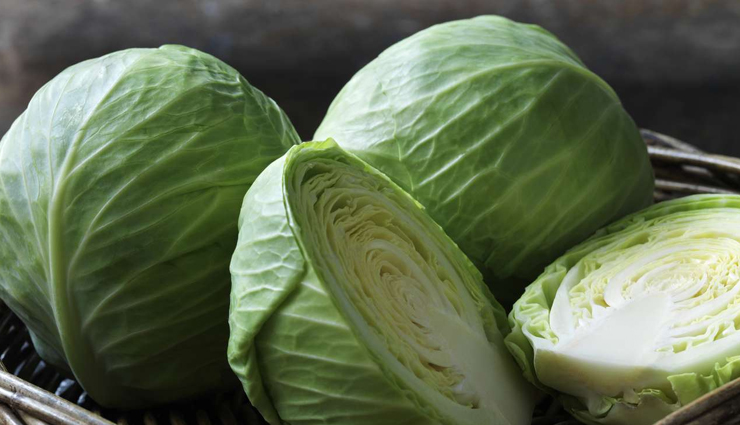
# Cabbage
Cabbage is a source of vitamin C. A one-cup (about 89 grams) serving of raw, chopped cabbage typically provides approximately 28 milligrams (mg) of vitamin C, which is around 31% of the recommended daily intake for most adults. While cabbage may not be exceptionally high in vitamin C compared to some fruits, it is a valuable source of this essential nutrient, especially when consumed as part of a balanced diet.
How to Incorporate Cabbage into Your Diet:
Coleslaw: Make coleslaw by shredding cabbage and mixing it with mayonnaise, vinegar, sugar, and other seasonings. It's a popular side dish.
Stir-Fries: Add cabbage to stir-fry dishes with other vegetables, proteins, and your choice of sauce.
Cabbage Rolls: Prepare cabbage rolls by filling blanched cabbage leaves with a mixture of ground meat, rice, and seasonings, then simmering them in tomato sauce.
Cabbage Soup: Make cabbage soup with cabbage, broth, vegetables, and herbs for a hearty and healthy meal.
Fermented Cabbage: Ferment cabbage to make sauerkraut or kimchi, which are not only delicious but also provide probiotics for gut health.
Cabbage Wraps: Use cabbage leaves as wraps for filling them with ingredients like ground meat, vegetables, and sauces.
Stuffed Cabbage: Stuff cabbage leaves with a mixture of rice and meat, then cook them in a tomato-based sauce.
Cabbage Salads: Incorporate raw or blanched cabbage into salads for added crunch and nutritional value.





